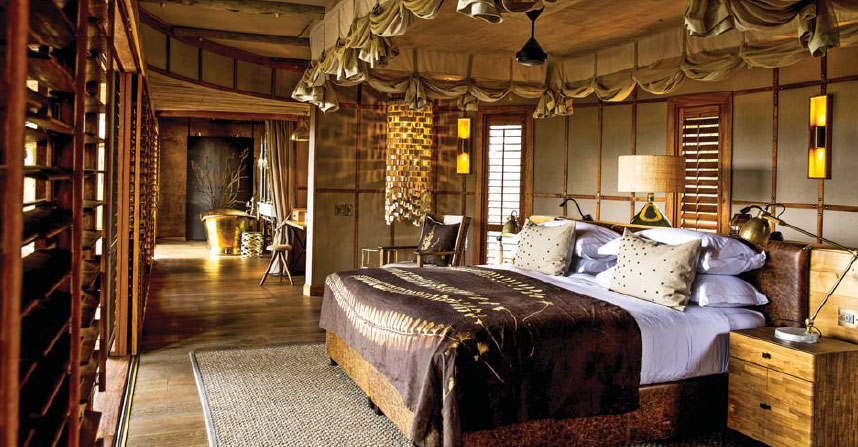 SINGAPORE (May 21): When Charles van Rensburg went to Rwanda for the first time last month, he was blown away — both by the people and the critically endangered apes that live in its cloud-covered mountains. After bush-bashing his way through verdant bamboo forest and moss-covered vines, he crouched within spitting distance of a family of mountain gorillas. With less than 2% difference in DNA to humans, the resemblance was striking, from their human-like hands and ears right down to their behaviour. “When you see the little gestures that they have or the little ones giggling, it really is special,” Van Rensburg tells Options on a recent visit to Singapore. “They are also very intelligent, something you can sense when you watch them,” he adds.
SINGAPORE (May 21): When Charles van Rensburg went to Rwanda for the first time last month, he was blown away — both by the people and the critically endangered apes that live in its cloud-covered mountains. After bush-bashing his way through verdant bamboo forest and moss-covered vines, he crouched within spitting distance of a family of mountain gorillas. With less than 2% difference in DNA to humans, the resemblance was striking, from their human-like hands and ears right down to their behaviour. “When you see the little gestures that they have or the little ones giggling, it really is special,” Van Rensburg tells Options on a recent visit to Singapore. “They are also very intelligent, something you can sense when you watch them,” he adds.
 Gorilla trekking is the latest must-do on many an intrepid traveller’s bucket list. And, Wilderness Safaris, of which van Rensburg is general manager for Asia and its Private Journeys business, offers a front-row seat to these magnificent apes. Its Bisate Lodge sits on the edge of Rwanda’s Volcanoes National Park, home to about half of the 880-odd mountain gorillas remaining on the planet. A morning hike up the emerald slopes of between one and three hours brings guests to the natural habitat of 12 families of mountain gorillas, some of which are monitored by the Dian Fossey Gorilla Fund International. The mountain gorillas are one of two subspecies of the eastern gorilla, the largest living primate. Despite their heft — alpha males can weigh up to 195kg — mountain gorillas are generally gentle and shy.
The national park is a window to the staggering biodiversity of Africa as it lies within the Albertine Rift, home to more than 500 species of plants and animals found nowhere else in the world. This includes the endangered golden monkey, which stands out for its striking orange and black fur, and the Rwenzori double-collared sunbird, which has vivid blue and red feathers. After a day out in the high-altitude forest, guests return to the eco-friendly retreat’s thatched villas, which are carved into a volcanic wall, and to panoramic views of nearby Lake Kivu.
Gorilla trekking is the latest must-do on many an intrepid traveller’s bucket list. And, Wilderness Safaris, of which van Rensburg is general manager for Asia and its Private Journeys business, offers a front-row seat to these magnificent apes. Its Bisate Lodge sits on the edge of Rwanda’s Volcanoes National Park, home to about half of the 880-odd mountain gorillas remaining on the planet. A morning hike up the emerald slopes of between one and three hours brings guests to the natural habitat of 12 families of mountain gorillas, some of which are monitored by the Dian Fossey Gorilla Fund International. The mountain gorillas are one of two subspecies of the eastern gorilla, the largest living primate. Despite their heft — alpha males can weigh up to 195kg — mountain gorillas are generally gentle and shy.
The national park is a window to the staggering biodiversity of Africa as it lies within the Albertine Rift, home to more than 500 species of plants and animals found nowhere else in the world. This includes the endangered golden monkey, which stands out for its striking orange and black fur, and the Rwenzori double-collared sunbird, which has vivid blue and red feathers. After a day out in the high-altitude forest, guests return to the eco-friendly retreat’s thatched villas, which are carved into a volcanic wall, and to panoramic views of nearby Lake Kivu.
 Eco-friendly Bisate Lodge near Volcanoes National Park has a reforestation programme
Eco-friendly Bisate Lodge near Volcanoes National Park has a reforestation programme
Sunita Sue Leng, formerly an associate editor at The Edge Singapore, is a writer with a travel problem This article appeared in Issue 831 (May 21) of The Edge Singapore. Subscribe to The Edge now











